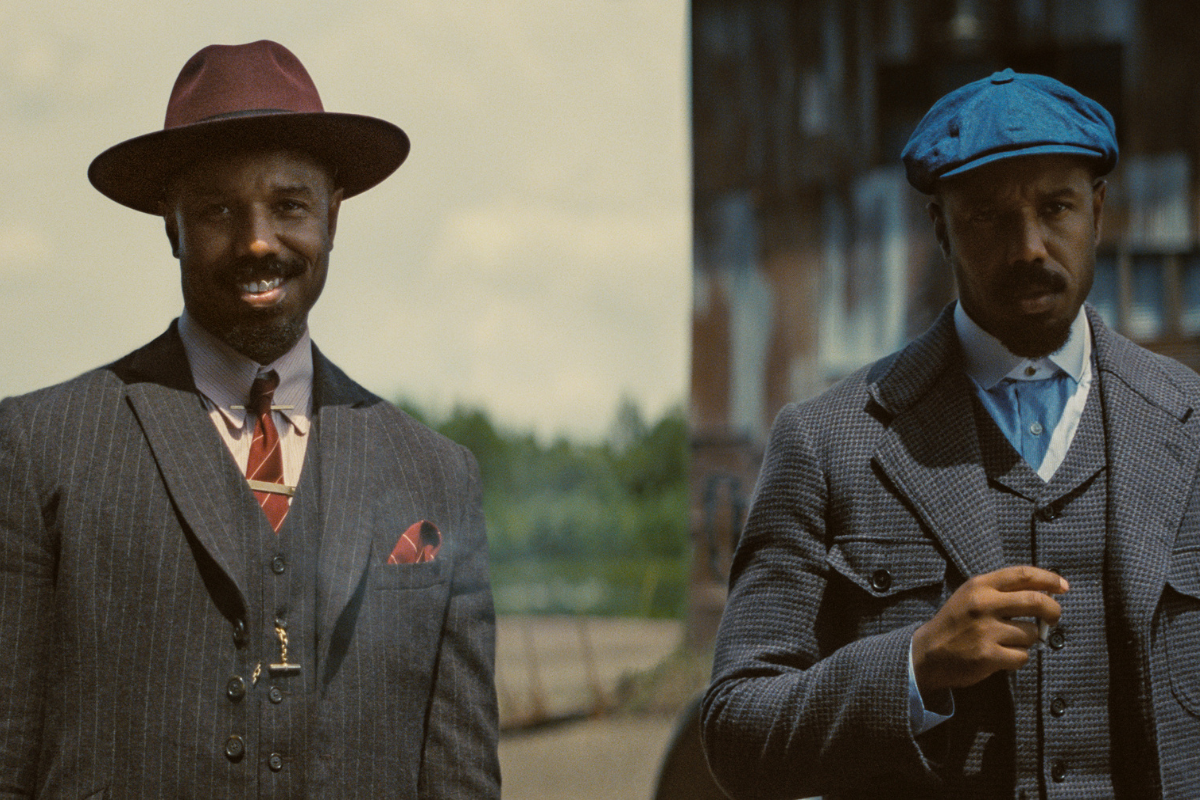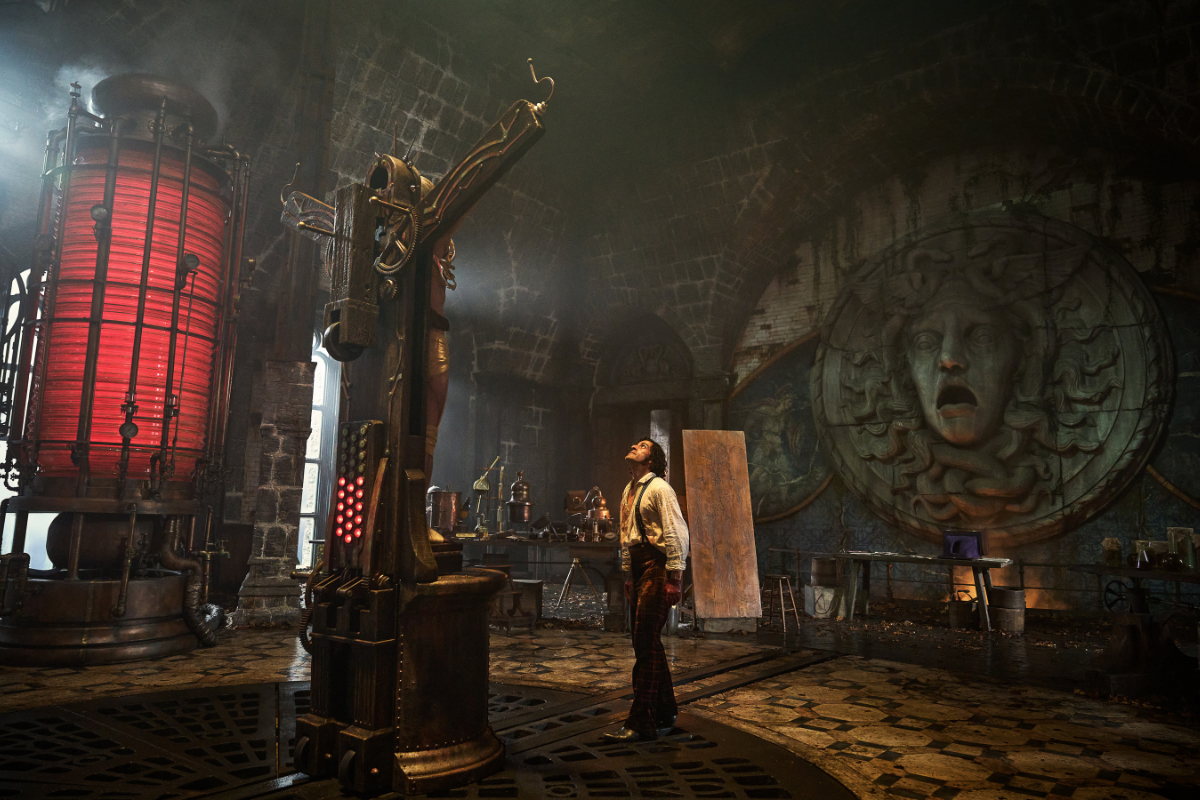BEHIND THE LINES WITH DR: Dogfights and Rewrites with George Lucas
Screenwriter Doug Richardson shares his lessons from a meeting with George Lucas about rewriting ‘Red Tails.’
Doug Richardson’s first produced feature was the sequel to Die Hard, Die Harder.Visit Doug’s site for more Hollywood war stories and information on his popular novels. Follow Doug on Twitter @byDougRich.
Meet Doug Richardson at his book signing at The Writers Store in Burbank on Saturday, December 12th from 2pm to 6pm! Not only will Doug sign your book, you can even get one of our editor's famous holiday cookies! Don't miss this chance to get the writer in your life a great gift!
*****
In January 2012, the movie Red Tails opened nationwide to some pretty decent business. It was a long time in the making. And I’d noticed that a lot of press surrounding the movie had to do with the difficulty George Lucas had getting it produced and into theaters.
Some time ago I did read a version of the script. In fact, I’d been asked to look at it to see if I’d be interested in rewriting it. At the time, Thomas Carter was attached as the director. Of course, the producer of record was George Lucas. My agent set up the meeting.
I’d met Thomas Carter once before. At the time, he was the former-actor-turned-THE-hot-TV director of the moment. Now he was coming off of his first feature, Swing Kids. I’d been told he wanted Red Tails to be his next feature.
I forget how long I waited outside Thomas’ Columbia Pictures office. While I was chatting up the assistants, the office door flew open. I turned to greet Thomas, only to find George Lucas standing there, hand outstretched.
“Doug? I’m George.”
Yeah, dude. I know who you are.
What’s it like meeting an icon? I guess it depends who the icon is or whether or not you view the person as an icon or just another guy who puts his pants on one leg at a time. Truth be told, I’ve never been a sci-fi or comic book geek. Nor was I much of a Star Wars fan—though I did learn to appreciate the series more as a parent of children who knew how to operate a DVD player. I recall a period of time when my house was filled with the distinctive sounds of light sabers thrashing the air.
Still, this was George Freaking Lucas standing in front of me. Hand shaking mine. A man who’d transformed movies right before my generation’s eyes. Okay, Mr. Jaded. Take the moment to be impressed. Oh. And try not to focus on the fact that, if I squinted, George looked like a silver-gray Ewok in a tweed sports jacket.
Thomas Carter was next to say hi. We were joined by the stock, legal-pad-wielding development Twinkie. I don’t remember her name but I recall her young, eager-to-please smile and more white teeth than Justin Bieber. She sat next to me on a stool while I occupied a chair that appeared leftover from the Mos Eisley Cantina. The usual small talk was dispensed with as George, very business-like, wanted to get down to the business of Red Tails.
The script and the resulting movie is the true story of the Tuskegee Airmen, a squadron of black aviators who fought in World War II. I was quite taken with the prospect of working on the movie and expressed as much. The script was full of some incredible aeronautic sequences that, if filmed utilizing the special effects expertise of Lucas’ ILM, would be absolutely eye-popping. My problem with the script was the characters, most of whom seemed rather wooden and devoid of any substantive conflict. It was as if the Airmen were battling only the issues of race and history instead of the practical problems of learning how to manage fighter planes that were more engine than fuselage and working together as a singular fighting unit—not to mention the German air force.
My suggestion was that we should rebuild each pilot from the ground up. Have them wrestling individual demons that only flying a P-51 Mustang would solve. I know. This sounds like screenwriting 101. But sometimes a filmmaker gets lost in the forest. Maybe even George Lucas.
I’d planted a seed. And it sprouted like a weed.
Thomas took on my suggestions. As a former actor, he was quick to internalize the make-believe demon. He began to improvise in the voice of the lead character. George scratched his beard and observed. I wondered if he might be prepping to give Thomas a bit of direction. Instead, George took on the role of the tough-but-fatherly squadron commander, suddenly barking commands. Thomas had himself an improv partner. He stood and began using the small office as his stage.
My instincts sparked. I’d imagined these inner conflicts manifesting themselves during battle sequences instead of through just another tired drill instructor versus cadet scene we’d seen a million times. I made the suggestion and, as if I were James Lipton instructing in a private workshop, George and Thomas shifted gears. Their improvisation instantly took on the lives of two Tuskegee pilots in the middle of an air battle against the Germans.
I must admit. I was absolutely delighted to be a witness. George Lucas and Thomas Carter, roaring around the office, one hand on their pretend control stick, the other on an equally imaginary machine gun trigger. Before the duo had finished their war game, they’d played multiple parts, made up a hundred classic lines of dialogue, and shot down twenty enemy aircraft. Bravo.
That eager D-Girl nudged me, big grin on her face and whispered, “You did it. They love this.”
Yes. I had done it. I’d somehow unglued the mega-mogul and his worthy director. The gig had to be mine. I threw down my final notes onto paper and we wrapped up the meeting. George and Thomas thanked me. We’d be in touch.
As I walked to my car, I performed my usual mental replay. I couldn’t get the images of the producer and director engaging the entire German Luftwaffe in that minimalist studio office. The pair did everything but stick out their arms and zoom between the chairs as if they had wings. And those who might think that such behavior is silly and unbecoming of adults? Yeah, maybe. But who would ever doubt the infinite imaginations of children? Or the financial wisdom of playing out a childish fantasy?
And then, just before patting myself on the back for planting the immature seed, I secretly wished I’d been more of a participant. What had prevented me from taking flight myself? By the time George and Thomas had finished their play acting, I’d been reduced to a fly on the wall.
Once in my car, I phoned my agent. He’d just gotten off a call with that D-Girl with the gleaming white teeth. She’d informed him of how awesome the meeting had gone. And though she hadn’t yet been able to follow up with George and Thomas, she fully expected the job was mine.
“I don’t think so,” I said.
“What?” asked my agent. “Were you in a different meeting?”
“Oh, I was there. I started it all.”
“So why do you think…”
“I may have started it, but I didn’t finish it.”
I described the meeting. My instinct was this: When George and Thomas eventually had a chance to unwind, digest, and return to the subject of whether I was the right fit to rewrite Red Tails, what would they most likely recall from our encounter? That they liked me? Appreciated what I had to add to their project? Or their own childlike imaginations, burning up the skies and winning both the wars against the Germans and racism? I was dead certain George Lucas and Thomas Carter would best recall the participants in the meeting more than the observers. All the way home I kicked myself for not getting off my ass, climbing into the cockpit of my own pre-pubescent imagination, and flying around the office with the other Tuskegee Airmen.
My instincts proved correct. I didn’t land the gig. But I surely doubt I’ll ever forget the lesson.
Check out Doug’s popular novels and his newest release, 99 Percent Kill.
Get Doug's volume of Hollywood war stories in his new book
The Smoking Gun: True Tales from Hollywood's Screenwriting Trenches
Doug Richardson cut his teeth writing movies like Die Hard, Die Harder, Bad Boys and Hostage. But scratch the surface and discover he thinks there’s a killer inside all of us. His Lucky Dey books exist between the gutter and the glitter of a morally suspect landscape he calls Luckyland—aka Los Angeles—the city of Doug’s birth and where he lives with his wife, two children, three big mutts, and the dead body he’s still semi-convinced is buried in his San Fernando Valley back yard. Follow Doug on Twitter @byDougRich.







